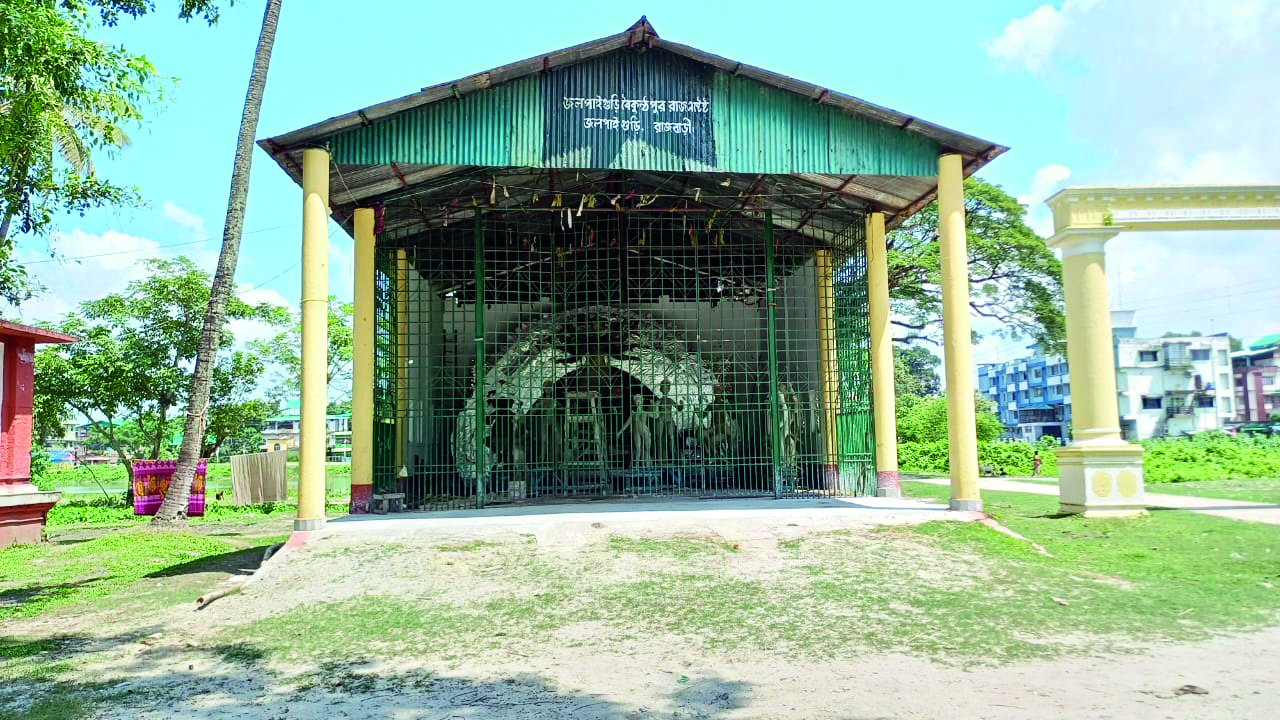Preparations begin for 515th Durga Puja at Baikunthapur Rajbari

JALPAIGURI: Preparations are in full swing for the historic 515 year old Durga Puja at Baikunthapur
Rajbari in Jalpaiguri.
The preparations start with ‘Nanda Utsav’ on Janmashtami day. Clay from Janmashtami Puja is used to craft the Durga idols. As in previous years, materials are being sourced from various regions—towels and sheets from Assam, cloth canopies from Bangladesh, and Banarasi sarees from Kolkata.
In addition, two royal family members have traveled to Varanasi, Haridwar, and Rishikesh to collect holy water from the Sapta Kunda (Seven Sacred Ponds), which will be used in the Puja. Gold ornaments will adorn the idol, in accordance with centuries-old tradition. This year marks the 515th celebration of this Puja, which is organised according to the customs of the Baikunthapur royal family. The ceremonial painting of Goddess Durga’s eyes (‘Chokkhudan’) will take place on the day of Mahalaya. According to historians, the Puja was first initiated 514 years ago by Shirshwa Singhaa and Bishwa Singhaa, who began the practice by making an idol out of straw. This tradition has been preserved by their descendants.
Raj Purohit (priest) Shibu Ghoshal explained: “The rituals have remained unchanged for centuries. The Puja follows the Kalika tradition with the main ‘Bodhan’ taking place on ‘Panchami,’ followed by a midnight ritual attended only by family members. In the past, human sacrifice was performed during this ritual, but today, a human-shaped figure made from rice is offered instead. However, the practice of goat sacrifice continues.” The Durga idol, traditionally set on a chariot, will again be featured this year, although one of the wheels, which had been in use for 150 years, was recently replaced.
Although this Puja is primarily a family event, it has gained popularity beyond Jalpaiguri, drawing visitors from nearby regions and even Bangladesh. Pranat Kumar Basu, a member of the royal family, noted: “Though the custom of releasing the ‘Neelkantha’ bird has been discontinued, we strive to uphold the original rituals. Though it is a family Puja, the local community participates actively. Prasad is distributed from ‘Saptami’ to ‘Navami,’ and people from suburban and distant areas visit to witness the celebration.”
On ‘Dashami,’ the Puja concludes with a unique ‘Bisarjan’ (immersion ceremony).
The idol is taken to the family pond on a chariot,
accompanied by ceremonial gunfire, followed by ‘Sindur Khela’ and the exchange of sweets during ‘Bijoya.’



